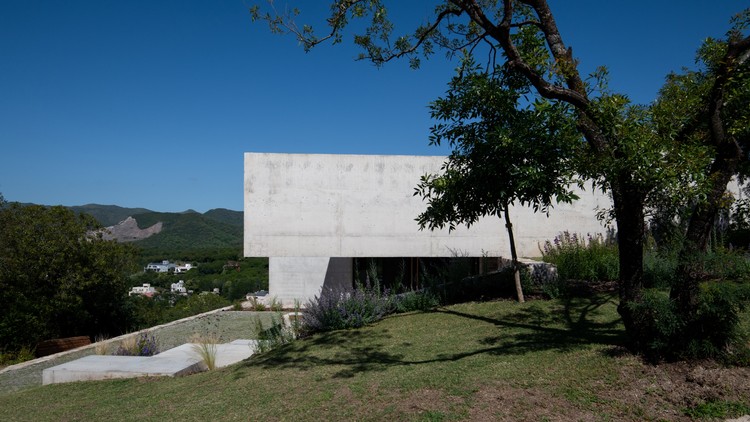Werdendes Ruhrgebiet Exhibition Bernhard Denkinger Architect
2015-06-08 02:00
© Deimel und Wittmar
c.Deimel和Wittma


架构师提供的文本描述。展览室是由以前的煤仓连接而成的。它们形成了一个像大教堂一样的三宫空间。展览建筑与定义的房间结构相对应,其装置延伸到几个房间区。带有展示柜和底座的平台在房间中蜿蜒而行,创造了与以前煤仓结构分离的内部空间。
Text description provided by the architects. The exhibition rooms were created through the connection of former coal bunkers. They form a cathedral-like three-nave space. The exhibition architecture reacts to the defined structure of the room with installations extending over several room sectors. Flat platforms with display cases and plinths meander through the room creating interior spaces dissociated from the structure of the former coal bunkers.
© Deimel und Wittmar
c.Deimel和Wittma


一个点阵的光点贯穿整个展览。通过激光切割在背光钢板上的长狭缝发出的光在房间里创造了广阔的照明区域,为了保护展品,这是在半黑暗中。
A lattice of light spots extends through the entire exhibition. The light coming through the laser-cut long slits in the backlit steel panels creates wide illuminated zones in the room, which, in order to protect the exhibits, is otherwise in semi-darkness.
Axonometric


展览的方式是从右到左,然后是在房间的中间,展示最著名和最珍贵的展品-来自韦尔登和埃森·艾比斯的中世纪早期物品。入口处有三个坡道,两旁都是史前考古发现。
The way through the exhibition is in the form of a spiral from the right to the left and then the middle of the room, where the most notable and precious exhibits, the early medieval items from Werden and Essen abbeys, are presented. The entrance is marked by three ramps lined with prehistoric archaeological finds.
© Deimel und Wittmar
c.Deimel和Wittma


房间的两半有不同的结构。在右边,展示考古文物的地方,路线是曲折的。对于考古发掘中经常出现的小而零碎但不那么感光的物体来说,“内向”的观察区域已经与周围的环境隔绝了。展品被沉入凹凸棒或凸出,作为明亮的物体在塔式展示柜中。
The two halves of the room have different structures. On the right, where the archaeological objects are shown, the route is winding. For the frequently small, fragmentary but less photosensitive objects from archaeological excavations, “introverted” viewing areas cut off from their surroundings have been created. The exhibits are sunk into the plinths or protrude from them as brightly lit objects in tower-like showcases.


在房间的左侧,中世纪早期的物体在细长的平行柱上以严格的几何图形单独呈现。直角的路径通向房间的中心,该区域的第一批手稿在平台上单独展示。
On the left side of the room, early medieval objects are presented individually in a strictly geometrical pattern on elongated parallel plinths. Paths at right-angles lead to the centre of the room, where the first manuscripts from the region are shown in separate showcases grouped together on platforms.
© Deimel und Wittmar
c.Deimel和Wittma


专为这个项目设计的书籍灯均匀地照亮手稿,使它们能够被仔细检查。
Book lights designed specially for this project illuminate the manuscripts evenly, permitting them to be examined in detail.
© Deimel und Wittmar
c.Deimel和Wittma


作为对20世纪20年代新客观性风格的工业纪念碑-展览室的参考,由黑色产业链制成的分隔室标志着房间的界限,并将其划分为几个部分。这些“链式窗帘”让人想起中世纪战士所穿的链状衬衫,以及它们作为桥梁、船只升降机和与早期工业和运输建筑有关的运输系统的组成部分的功能。
As a reference to the exhibition room, an industrial monument in the New Objectivity style of the 1920s, room dividers made of black-painted industrial chains mark the limits of the room and divide it into sections. These “chain curtains” recall the chainmail shirts worn by medieval warriors and also their function as components of the bridges, boat lifts and conveyor systems associated with early industrial and transport architecture.
© Deimel und Wittmar
c.Deimel和Wittma


展览在物流和物品保护方面提出了相当大的要求。从第三到十一世纪的800多件展品,包括来自该地区的早期手稿和乐谱,以及极其罕见的教堂珍宝,保险金额超过7000万欧元。
The exhibition makes considerable demands in terms of logistics and protection of the objects. The 800 or more exhibits from the third to eleventh centuries, consisting of early manuscripts and music scores from the region and extremely rare church treasures, are insured for over 70 million euros.
Axonometric






























Architects Bernhard Denkinger Architect
Location Ruhr Museum, Zollverein Coal Mine Industrial Complex, Gelsenkirchener Straße 181, 45309 Essen/Ruhr, Germany
Category Interiors Architecture
Director Heinrich Theodor Grütter
Project Year 2015
Photographs Deimel und Wittmar
























